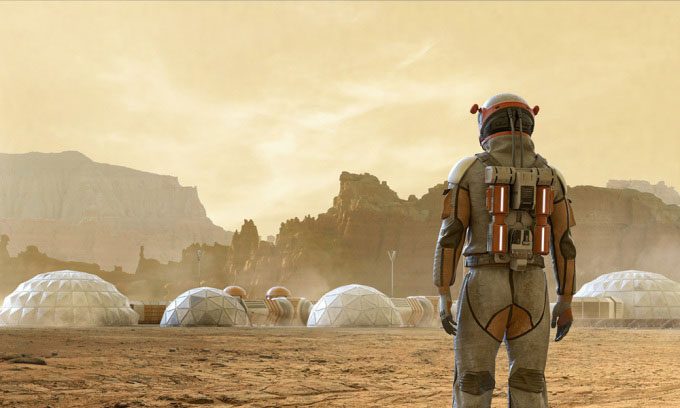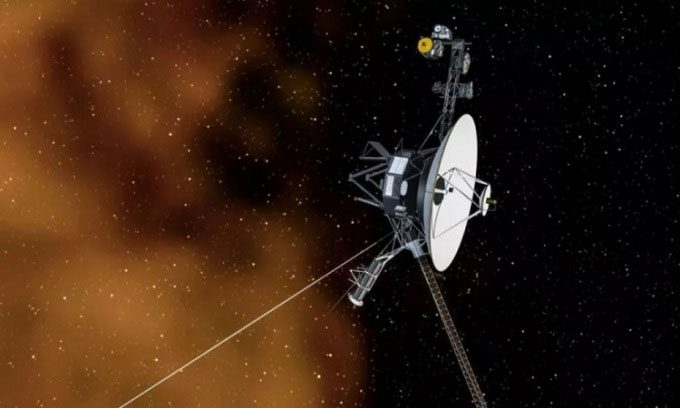Humans may reach Mars in a few decades, but it could take hundreds or even tens of thousands of years to get to planets beyond our Solar System.
Elon Musk, CEO of SpaceX, aims to establish a city of one million people on Mars by 2050. This ambitious goal seems far-fetched since humans have yet to set foot on the Martian surface. So, how long will it take for humanity to colonize another planet? Is it possible for humans to inhabit celestial bodies outside our Solar System?

Astronauts on Mars will have to learn to live with high radiation and extreme temperatures. (Photo: Peepo).
The answer to these questions depends on the destination. For Mars, a few decades is not necessarily unrealistic. According to Serkan Saydam, Deputy Director of the Australian Space Engineering Research Center and a professor at the University of New South Wales, colonizing Mars could be feasible within a few decades. “I believe that by 2050, we will have a human colony on Mars,” he stated.
Saydam believes that the first crucial requirement for establishing a Mars colony is water, which can be extracted from ice and hydrous minerals. He argues that water will facilitate agriculture and the ability to grow food on Mars. Meanwhile, hydrogen from ice and minerals could serve as a fuel source for rockets.
Other scientists are not as optimistic. Space engineer Louis Friedman, co-founder of the nonprofit organization The Planetary Society, believes that colonizing Mars is unlikely in the near future. Rachael Seidler, a neuroscientist at the University of Florida who has worked with NASA astronauts, thinks this idea sounds fanciful.
However, humanity may reach Mars in the next few decades. China plans to start sending crews to Mars in 2033, while NASA aims for the late 2030s or early 2040s. After humans arrive on the red planet, the next step could be building a colony.
A colony will require a certain level of self-sufficiency but does not need to be entirely independent of Earth. Saydam compares Mars to a remote island that occasionally requires supplies from Earth. “Most equipment and tools will be transported from Earth. I don’t think you can manufacture a truck on the surface of Mars,” he stated.
A Mars colony will need to establish some form of financial sustainability. Space tourism is one option, but Saydam believes that mining resources is key to successful colonization.
Despite being the most practical option for settling beyond Earth, Mars is not necessarily the most suitable planet for humans. Over 95% of Mars’ atmosphere is CO2, the climate is extremely cold with an average temperature of about -60 degrees Celsius, and spacecraft from Earth take approximately 8.5 months to reach Mars while being bombarded by radiation.

Simulation of the Voyager 1 spacecraft moving through interstellar space. (Photo: NASA).
There are likely exoplanets (planets outside the Solar System) that are “more hospitable” to humans. The problem is that they are too far away. Humanity has not yet been able to send any spacecraft to exoplanets. The rare spacecraft that have escaped the Solar System are Voyager 1 and 2, which took 35 and 41 years, respectively, to reach interstellar space. Meanwhile, exoplanets are much farther away.
“With current technology, we would need tens of thousands of years to reach the nearest exoplanet,” Frédéric Marin, an astrophysicist specializing in black holes at the Strasbourg Observatory of the University of Strasbourg, said.
This travel time might make the idea of colonizing exoplanets seem impossible. However, Marin has run computer simulations for interstellar travel and hopes that travel times will significantly decrease in the near future due to faster spacecraft.
“We know that in science, every 100 years, the speed of propulsion vehicles can increase tenfold,” Marin said. Thus, travel times to exoplanets could gradually decrease from tens of thousands of years to thousands of years, and eventually to hundreds of years.
Marin proposed a hypothetical scenario where humans could reach an exoplanet within 500 years. This centuries-long journey would still require many generations of crew members, most of whom would not live to see the exoplanet colonized.
Simulations by Marin indicate that a starting population of about 500 would be suitable for such a multi-generational spacecraft. However, the crew would face challenges living their entire lives onboard, and their descendants would have to grow up in a spacecraft. This raises ethical concerns as well. Additionally, climate change and other challenges on Earth could push humanity towards extinction before we could embark on interstellar travel and colonize exoplanets.





















































